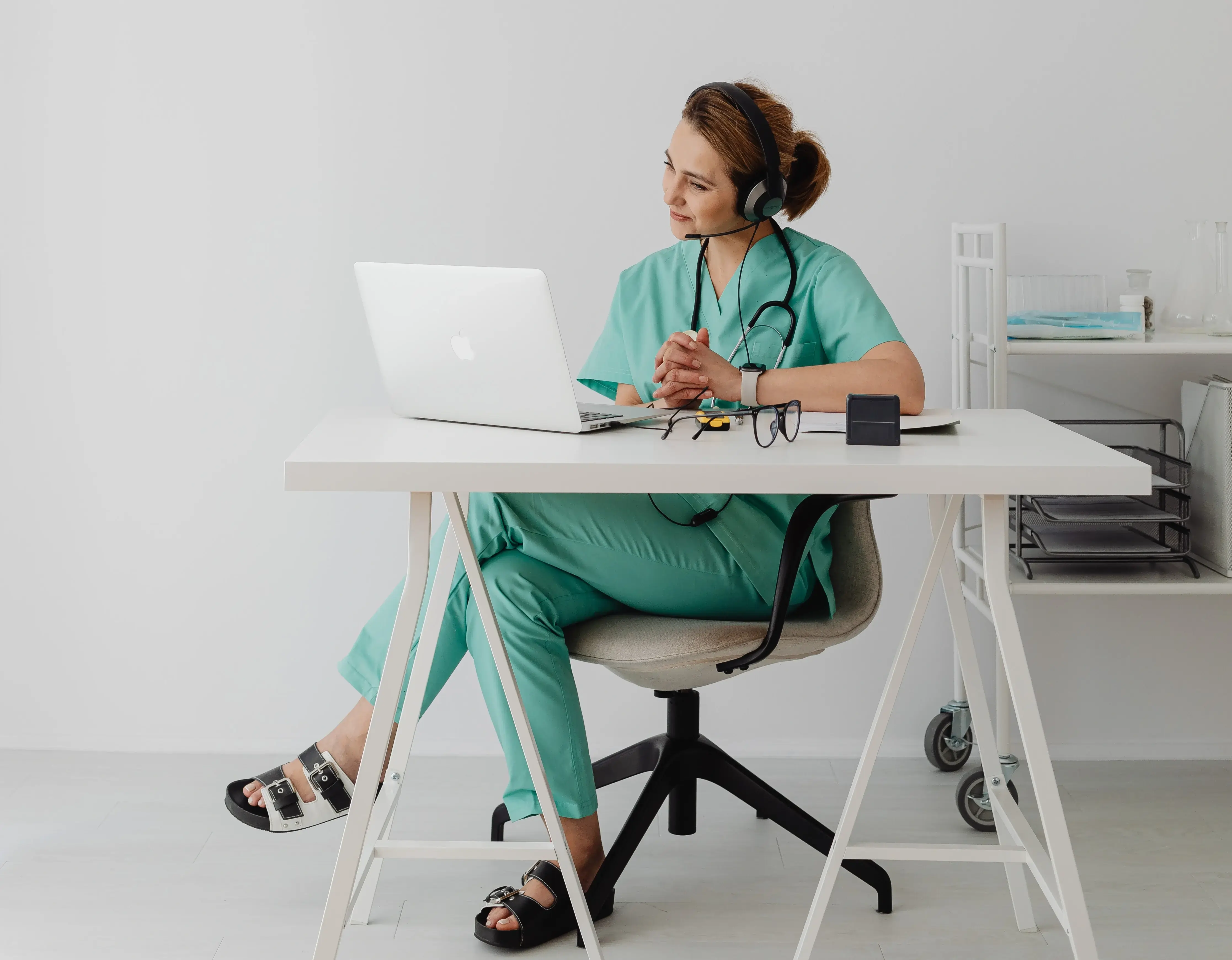If you opt to create a custom telemedicine application, you will be participating in a really complicated, but fascinating and socially significant project. And one of the most important aspects will be how to ensure HIPAA compliance.
We’ve been down this road, and we’d like to share our development experience with you.
🦾 What tech stack to choose for developing a custom telemedicine software
Non-standard projects require customized solutions, and the Laravel framework is excellent for building a custom telemedicine solution in our instance.
Its key benefits for our work were as follows:
- the high speed of Laravel-developed projects: It has a favorable influence on search engine rankings and user experience with the platform.
- the high level of SQL injection and cross-site scripting prevention;
- the MVC-architecture of the framework enabled us to separate the abstract layers of the program-model, controllers, and views-as well as the activities of frontend and backend engineers. As a result, the chance of bugs that can disrupt the system at several levels has decreased;
- customization without limits is a special Laravel feature, since even pre-made templates and packages may be dismantled and reassembled how the developer or client desires.
These and other benefits of the Laravel framework make it a perfect tool for the rapid development of customized business solutions.
🦿 Which server to choose for the telemedicine application
One of the most critical tasks was to maintain the security of confidential patient data. The AWS server was perfect for our purpose since its strengths addressed the security issue.
What kind of strengths are we talking about?
- Data encryption in the database aids in keeping patient records confidential.
- Encrypting downloaded files secures patient data when it is accessed or disseminated.
- The ease of scaling helps with the optimization of platform functionality and cost control.
If you’re working on a telemedicine project, try working with AWS, since the server can assist you in implementing the difficult security requirements of data preservation.
🧑💻 Architecture features for the telemedicine application to ensure HIPAA compliance
The platform we created includes network and process security measures to ensure HIPAA compliance. During the project, we implemented the following security measures:
- Https TLS/SSL secure connection.
- Proper permissions for internal users to view and edit data they are allowed access, this includes patients and doctors or any other data pieces.
- Force Logout inactive sessions after a specific period of time.
- Implementing 2FA and logging back in can be via PIN, Touch ID or password.
- Frequent backups of data
- Restricted access to confidential information should be clearly identified in the terms of use, i.e. don’t allow export of data, only allow certain doctors to view their access allowed patient data.
- Consider restricting access to data via IP.
- Link sensitive data with hashed IDs.
- Keep access logs for the server, i.e. do not provide root user access to the server, there should be a key person that commissions the server and then any sub-level users should be created and provided to IT staff.
- Prevent exporting data out of databases.
This security measures checklist is an example of the tech challenges you’ll face while developing custom telemedicine software.
🧠 Challenges in developing custom solution for the telemedicine application
Projects with no challenges aren’t worth writing an article on, are they? Throughout the project, we’ve encountered and solved several interesting and tough difficulties that are worthy of attention.
🤳 Physical and digital test size
The validity of online vision monitoring results is closely related to whether the digital test size corresponds to its physical equivalent. The work was made more difficult by the fact that monitor producers don’t have a common size standard: 1 pixel or millimeter on different displays might differ.
To address this issue, we built a system that compares the size of the test on the screen to the size of a physical credit card. Thus, 1 px or mm on the screen is equivalent to 1 px or mm in the real world.
🔑 Flexible system of roles and access
Each clinic’s internal structure of roles may be different. The problem was figuring out how to consider each of them while developing the platform.
Clinics may customize every doctor’s role in our software and select which functions are available to them based on their level of access. This helps avoid overloading the system with extraneous functions and saves patient care time.
📨 The referral code system
The digital platform had to be integrated into the physical clinic customer service procedure. Our team devised a system of specific access codes to do this.
Each clinic has its own set of unique referral codes that doctors can give to their patients. Each of these codes allows access to a certain online medical practice – a procedure or test – that the patient should go through. Each code also includes information on which doctor issued it and for how long.
To summarize, each telemedicine project is unique and challenging in its own way. You may face a slew of non-standard technical difficulties, but the more enjoyable it will be to discover a customized solution for them.
Best wishes for reaching new heights! 🙌
Subscribe to our blog


